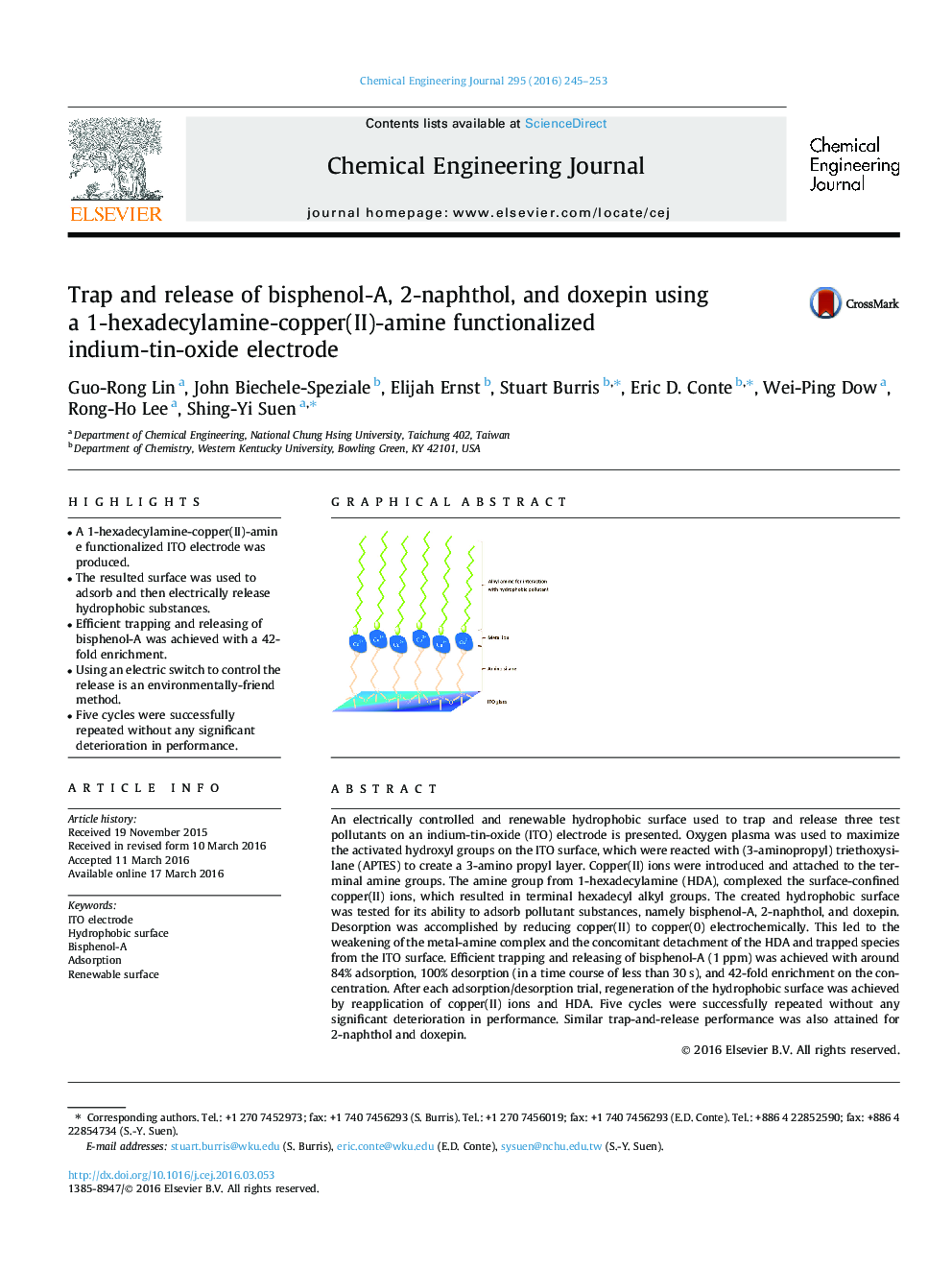| کد مقاله | کد نشریه | سال انتشار | مقاله انگلیسی | نسخه تمام متن |
|---|---|---|---|---|
| 145609 | 456345 | 2016 | 9 صفحه PDF | دانلود رایگان |

• A 1-hexadecylamine-copper(II)-amine functionalized ITO electrode was produced.
• The resulted surface was used to adsorb and then electrically release hydrophobic substances.
• Efficient trapping and releasing of bisphenol-A was achieved with a 42-fold enrichment.
• Using an electric switch to control the release is an environmentally-friend method.
• Five cycles were successfully repeated without any significant deterioration in performance.
An electrically controlled and renewable hydrophobic surface used to trap and release three test pollutants on an indium-tin-oxide (ITO) electrode is presented. Oxygen plasma was used to maximize the activated hydroxyl groups on the ITO surface, which were reacted with (3-aminopropyl) triethoxysilane (APTES) to create a 3-amino propyl layer. Copper(II) ions were introduced and attached to the terminal amine groups. The amine group from 1-hexadecylamine (HDA), complexed the surface-confined copper(II) ions, which resulted in terminal hexadecyl alkyl groups. The created hydrophobic surface was tested for its ability to adsorb pollutant substances, namely bisphenol-A, 2-naphthol, and doxepin. Desorption was accomplished by reducing copper(II) to copper(0) electrochemically. This led to the weakening of the metal-amine complex and the concomitant detachment of the HDA and trapped species from the ITO surface. Efficient trapping and releasing of bisphenol-A (1 ppm) was achieved with around 84% adsorption, 100% desorption (in a time course of less than 30 s), and 42-fold enrichment on the concentration. After each adsorption/desorption trial, regeneration of the hydrophobic surface was achieved by reapplication of copper(II) ions and HDA. Five cycles were successfully repeated without any significant deterioration in performance. Similar trap-and-release performance was also attained for 2-naphthol and doxepin.
Figure optionsDownload as PowerPoint slide
Journal: Chemical Engineering Journal - Volume 295, 1 July 2016, Pages 245–253